You may have heard of the X-files, now here I am introducing you to the turtle files! A delve into all things turtle here at Wingham Wildlife Park. If you’re lucky, I may even introduce you to some species not yet on display!
Whilst visiting the reptile house you may have noticed we are currently home to six species of turtles (not including our lake residents), four of which are considered aquatic turtles and most are categorised as endangered or critically endangered by the IUCN! Over the next few blogs, I’m going to introduce you to these species!
File 1: Annam Leaf Turtles (Mauremys annamensis)
The Annam leaf turtle, also known as the Vietnamese pond turtle, is a species of aquatic turtle that hails from the freshwater wetland habitats of Vietnam. However, if you were to search for these individuals in the wild, you’d have a very hard time finding them as it has been estimated that only 50 individuals can be found, making them one of the most endangered reptiles on earth! For a whole 65 years these turtles were thought to have become extinct as they hadn’t been seen! This was mostly because they are very good at camouflaging themselves within thick vegetation, hiding themselves from any potential threats or predators, especially as their shell has a leaf-like shape to them!
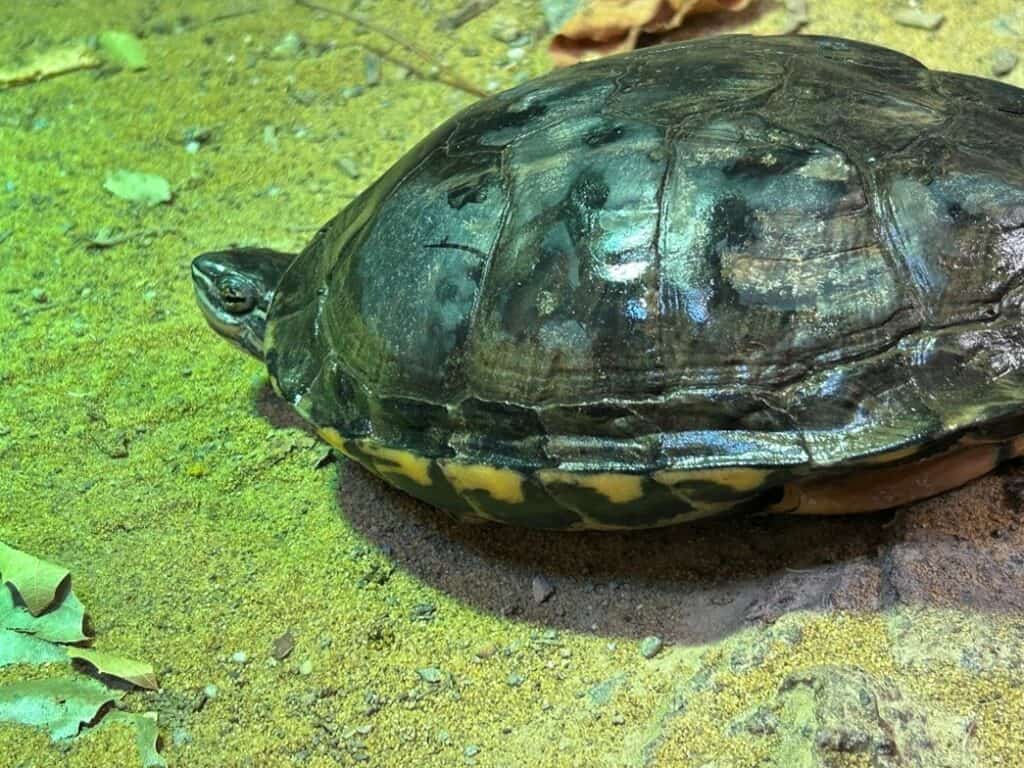
DID YOU KNOW??? A group of turtles is called a bale!
Why are These Turtles so Endangered in the Wild?
As with many animals here at the zoo, one of the biggest threats faced by these turtles are the humans that live around them. Considered a pest species by the local farmers, these turtles are often hunted. As with many other turtle species, they are often illegally poached and sent and sold in China for the illegal pet, meat and traditional medicine trade. It is believed in traditional medicine that if you mix the blood of the Annam leaf turtle with strong rice wine and drink the mixture, it can cure heart disease.
Another big impact on the turtle’s decline is habitat loss due to the establishment of increased numbers of rice fields and high pollution levels in water sources. Along with this, none of the Vietnamese turtle species habitat are protected, however currently conservation efforts by the Asian Turtle Program are seeking to change this. There’s also a breeding program being conducted by the Asian Turtle Program in Vietnam with the hopes of reintroducing young back into the wild.
Breeding
An Annam leaf turtle can hit sexual maturity anytime between their 5th and 7th birthdays, which isn’t too old for a species that, in captivity, can reach 46 years old! For a turtle species, the Annam leaf turtles lay a single small clutch of eggs per year, averaging at 5 per breeding season. But like most reptiles, the temperature that these eggs get hatched at can determine their sex! These eggs can take anywhere from 80-131 days to hatch! Currently at the park we have four female turtles with future hopes of breeding and contributing to the captive conservation efforts of these turtles.
What do they Eat?
Annam leaf turtles like to feast on small aquatic invertebrates, aquatic plants fruits and veggies. In the wild you’ll often see them venture out of the water in search of a nice juicy worm.
Where Can I See These Turtles and What Do They Look Like?
The four female Annam leaf turtles can be found in the green iguana enclosure in the rainforest section of the Reptile House. They spend most of their time in the water portion of the enclosure usually hiding amongst the underwater logs closest to Suzie’s, the Burmese python, enclosure. If you are lucky, you may see one or two of these turtles venture onto the land, however this only normally happens when they are trying to lay eggs.
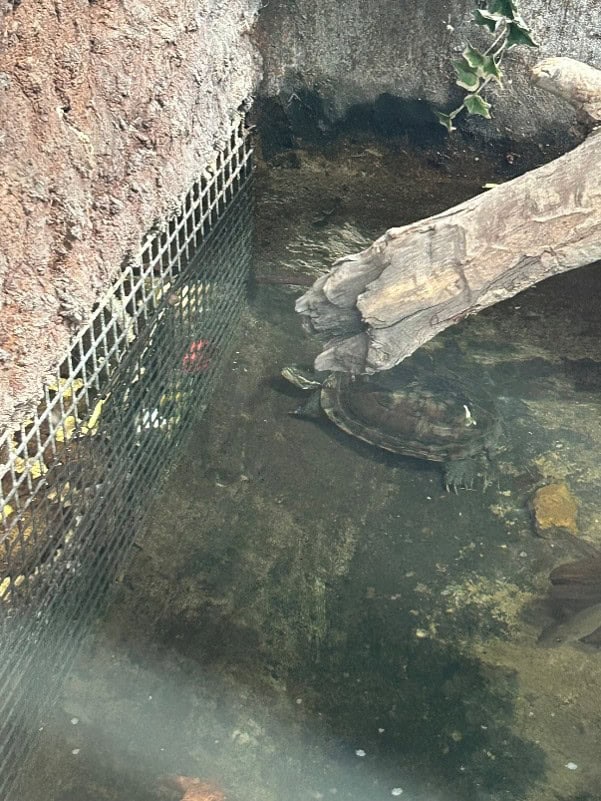
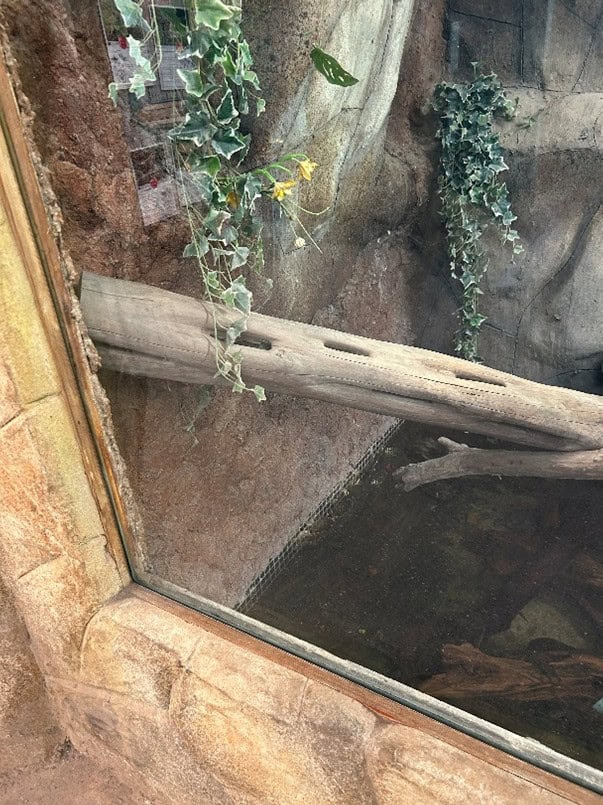
The leaf turtles’ usual hiding spots.
The Annam leaf turtles also sometimes share their aquatic home with our black marsh turtle (a future subject of the turtle files) so this is how you tell them apart. To start with, the Annam leaf turtles have a smaller dark head with three or four yellow stripes that go from the top side of their heads and into their necks. The Annam leaf turtles are also larger with a shell plastron (underbelly armour) which is mostly orange or yellow with big black blotches on each scute (section of that shell plate). From above, the shells look domed and are very dark in colour, especially if the turtles are under water.
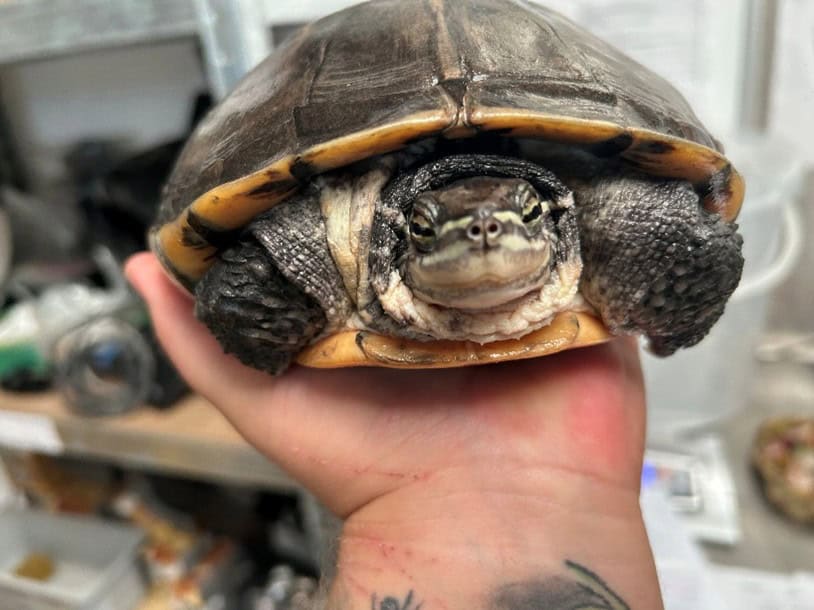
Truthfully, not much else is known about this species as it is so rarely seen in the wild. However, efforts are being made by zoos globally to learn as much as they can about the captive behaviours of this critically endangered species.
By Beth, Deputy Head of Reptiles & Invertebrates
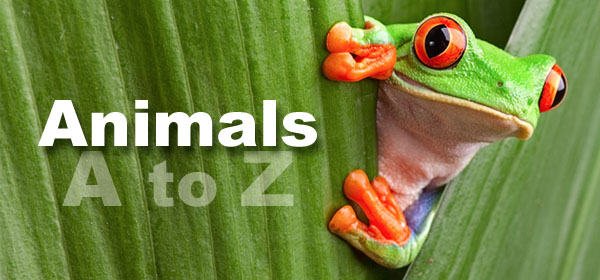


No Comments
Be the first to start a conversation